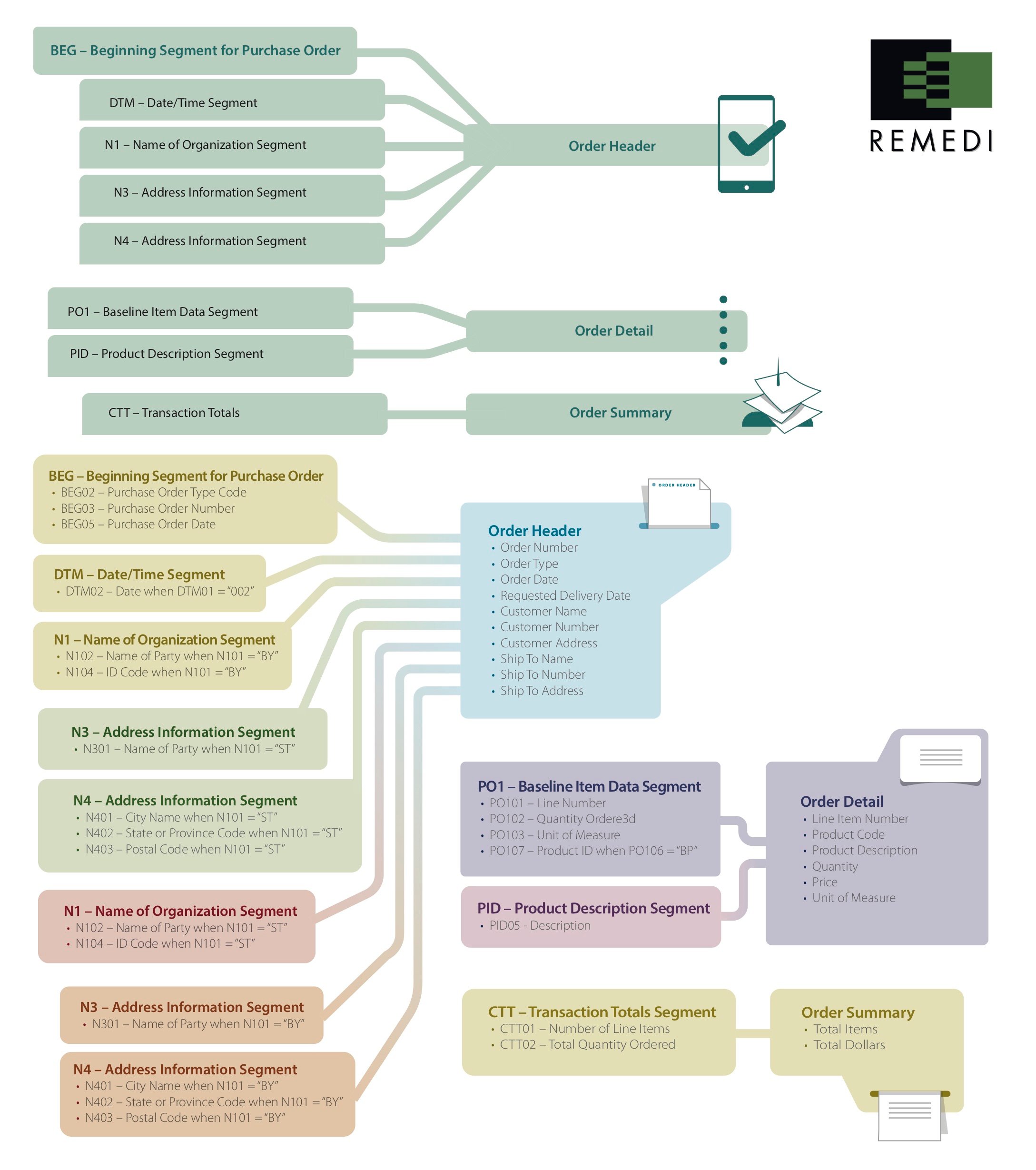
EDI systems make firms more efficient, productive, and profitable. An integral part of implementing an EDI system is data mapping.
If you are unfamiliar with EDI, the term “data mapping” might sound intimidating. This article explores its role in EDI implementation and how it works.
What Is EDI Data Mapping?
In the realm of EDI systems, data mapping refers to locating information to be transferred through the software and ensuring it is properly formatted.
To understand a little more about data mapping, it is important to understand how EDI systems work. They send data across a secure connection between two firms. That information has to be in a specific format so that the other organization’s computer can read it.

EDI systems send data across a secure connection between two firms.
Why use an EDI system when you could use a mode of communication such as email? Consider this example to illustrate the benefits of EDI systems. Suppose Sam’s Furniture needs to order merchandise, so the company sends a purchase order to its supplier. If the furniture company were to send an email, it could take time for the supplier’s employees to receive it and then enter the order information into the system. When Sam’s sends a purchase order through its EDI system, the information is automatically entered into its supplier’s system, so the order is fulfilled that much faster.
How Does Data Mapping Work?
Successfully mapping data requires understanding both where information is located and in what format it exists. Figuring out these details can make or break an EDI implementation. Consider an example.
Before Sam’s Furniture implemented its EDI system, the company needed to map its data. Jim, the person in charge of the data mapping project, discovered that the digital purchase order forms Sam’s uses had a text field. Most of the suppliers which Sam’s deals do not use a text field in their purchase order systems. If Jim had not dealt with the problem, the values in that text field would have shifted, and suppliers would not have received accurate orders (which would lead to mistakes).
Sometimes, the person or team in charge of data mapping does not have the expertise necessary to ensure the project is successful.
Jim’s attention to detail enabled him to figure out a solution to the problem. He created transition rules for the text field so that the information within it would not get lost. Thanks to his foresight, Sam’s EDI system implementation went very smoothly. Sam’s has no issues transmitting data to its partners in the supply chain.

Unfortunately, not every firm is lucky to have someone like Jim handling their data mapping projects. Sometimes, the person or team in charge of data mapping does not have the expertise necessary to ensure the project is successful. If you do not know how to use EDI mapping software, you will not get very far.
Implementing an EDI system requires enormous attention to detail as well as highly specialized knowledge of data formats. You do not have to abandon your goal of implementing this technology just because there is no in-house talent with this particular expertise, however. EDI consultants can help you determine what pitfalls you might be facing with your data and how to fix them before they become major problems.
Want to focus on your core business while reaping the benefits of an EDI system? An EDI consultant can make that goal a reality. To learn more, contact us.
Are you ready for data integration? Get the assessment. Absolutely free.






